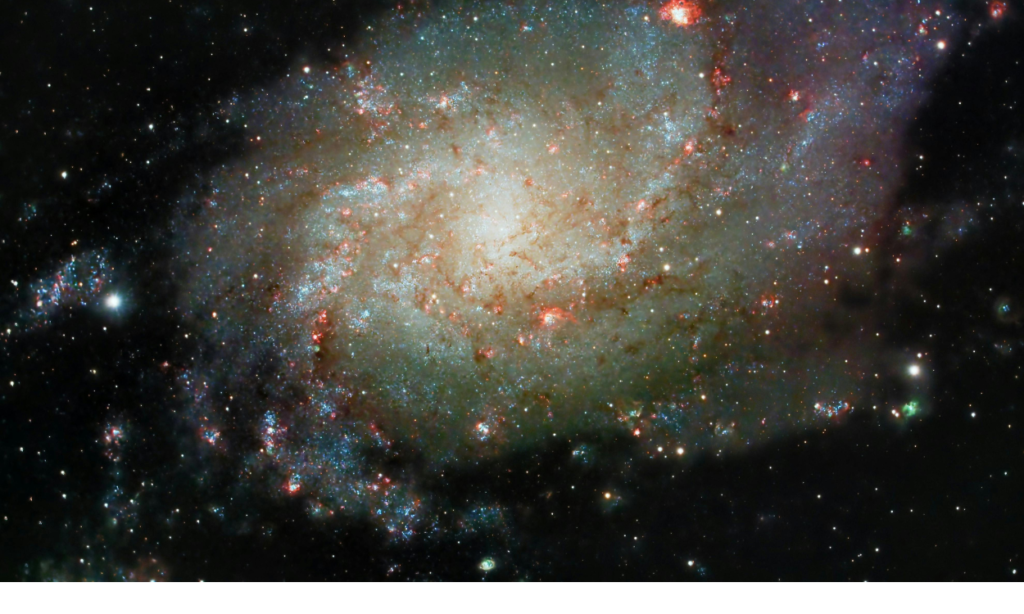The question “How do we know our Milky Way is a spiral galaxy?” has fascinated astronomers for centuries. We live within this majestic system of stars, gas, and dust, yet for much of human history, our view was limited to what we could see with the naked eye — a hazy band of light stretching across the night sky. Today, through advanced telescopes, radio observations, and deep-space mapping, scientists have uncovered compelling evidence revealing the true structure of our home galaxy. The journey to understanding how we know our Milky Way is a spiral galaxy is a story of curiosity, observation, and scientific progress.

The Challenge of Seeing Our Own Galaxy
Before we explore how we know our Milky Way is a spiral galaxy, it’s important to understand why it’s so difficult to determine its shape. Unlike distant galaxies, which we can view from the outside, we are inside the Milky Way. Our solar system lies about 27,000 light-years from the galactic center, embedded in one of its spiral arms. From this vantage point, our view is obstructed by interstellar dust that blocks visible light.
When ancient astronomers looked up at the night sky, they saw a diffuse, milky band — hence the name “Milky Way.” They had no way of knowing that this glow came from billions of distant stars arranged in a massive, flattened disk. It took the invention of the telescope, the development of spectroscopy, and eventually radio astronomy for us to understand how we know our Milky Way is a spiral galaxy.
The First Clues: Counting the Stars
The first serious attempt to map our galaxy came from William Herschel in the late 18th century. Using a telescope, Herschel counted stars in different directions, assuming that more stars meant looking deeper into the galaxy. His map suggested a flattened disk shape with the Sun near the center. Although he couldn’t see the spiral arms, his work laid the foundation for understanding the Milky Way’s structure.
This early effort was primitive but vital to answering the question: how do we know our Milky Way is a spiral galaxy? Herschel’s observations hinted that we lived in a vast disk of stars, but it would take over a century more to confirm the spiral nature.
Cepheid Variables: Mapping the Galactic Structure
In the early 20th century, astronomer Harlow Shapley used Cepheid variable stars — stars whose brightness varies in a predictable way — to estimate distances across the Milky Way. His work revealed that the galaxy was far larger than previously thought and that our solar system was not at the center, but rather located toward the edge.
This discovery was critical to how we know our Milky Way is a spiral galaxy, as it provided a scale and position that made sense only if the galaxy had an organized structure. Shapley’s measurements also helped identify the galactic center, located in the direction of the Sagittarius constellation.
Radio Astronomy: Peering Through the Dust
The next major leap came in the mid-20th century with the birth of radio astronomy. While visible light is blocked by dust, radio waves can penetrate it, allowing astronomers to study the galaxy’s interior.
In 1951, astronomers used radio telescopes to map neutral hydrogen gas (H I) emissions throughout the Milky Way. These radio signals revealed a distinct spiral pattern of gas clouds winding around the center — direct evidence showing how we know our Milky Way is a spiral galaxy.
By tracing the hydrogen emissions, scientists discovered several spiral arms:
- The Perseus Arm,
- The Carina-Sagittarius Arm,
- The Norma Arm, and
- The Outer Arm.
Our own Solar System resides in a smaller region called the Orion Arm (or Orion Spur). These findings were monumental in proving that the Milky Way is a spiral galaxy.
Infrared Observations: Seeing Through the Cosmic Veil
In recent decades, infrared telescopes like NASA’s Spitzer Space Telescope and ESA’s Gaia mission have provided even more evidence. Infrared light, like radio waves, can pass through interstellar dust, revealing stars that were previously hidden.
Infrared mapping has shown that the Milky Way has a barred spiral structure, meaning a central bar-shaped region of stars extends from the galactic center, with spiral arms radiating outward. This observation has refined our understanding of how we know our Milky Way is a spiral galaxy, showing that it’s not just a simple spiral — it’s a barred spiral galaxy, classified as type SBc.
Stellar Motions and Galactic Rotation
Another way we know our Milky Way is a spiral galaxy is by studying how stars move. Astronomers have observed that stars near the center of the galaxy orbit faster than those farther out. This rotation pattern, known as differential rotation, is characteristic of spiral galaxies.
The way stars and gas clouds move suggests the presence of massive spiral arms and even hints at the distribution of dark matter, which influences the galaxy’s overall rotation. By tracking these movements, scientists can model the Milky Way’s shape and confirm its spiral structure.
Comparing with Other Galaxies
A powerful clue to how we know our Milky Way is a spiral galaxy comes from looking outward into the universe. The Hubble Space Telescope and other instruments have captured millions of galaxies — elliptical, irregular, and spiral.
When we compare their characteristics — such as star distribution, light patterns, and rotation — to our own galaxy’s observations, the similarities are striking. The Milky Way’s disk, central bulge, and spiral arms all align with what we see in other spiral galaxies like Andromeda (M31) and Triangulum (M33).
This comparative approach gives astronomers confidence in classifying our galaxy’s structure and answering the question of how we know our Milky Way is a spiral galaxy.
The Role of Star Formation
Star formation also provides crucial evidence in understanding how we know our Milky Way is a spiral galaxy. Spiral arms are active regions where new stars are born from dense clouds of gas and dust. By mapping areas of high star formation — often visible as glowing nebulae — scientists can trace the spiral arms’ outlines.
Observations of bright young stars, clusters, and emission nebulae align perfectly with the spiral arm patterns revealed by radio and infrared data. This ongoing star birth supports the dynamic and evolving nature of the Milky Way as a spiral galaxy.
The Central Bar and the Galactic Bulge
Further evidence of how we know our Milky Way is a spiral galaxy comes from the galactic center itself. Infrared and radio studies reveal a dense, elongated bar structure made of stars and gas, stretching across about 27,000 light-years.
This bar funnels gas toward the center, feeding both star formation and the supermassive black hole known as Sagittarius A*. Such a bar is a hallmark of many spiral galaxies, reinforcing that the Milky Way’s shape fits within this cosmic family.
Modern Mapping Missions
Today, missions like Gaia are revolutionizing our understanding of the galaxy. Gaia measures the precise positions, distances, and motions of over a billion stars, creating the most accurate 3D map ever made of the Milky Way.
These data sets provide conclusive evidence of the spiral arms, the disk’s thickness, and the galactic warp — all confirming how we know our Milky Way is a spiral galaxy beyond any doubt.
Conclusion: A Spiral of Discovery
So, how do we know our Milky Way is a spiral galaxy? Through centuries of careful observation, from counting stars to mapping radio waves and measuring stellar motions, humanity has pieced together a breathtaking picture of our cosmic home.
Our Milky Way is not just a collection of stars; it is a majestic, rotating spiral structure stretching over 100,000 light-years, filled with billions of stars, planets, and mysteries yet to be uncovered.
The journey of discovery continues, but one thing is clear: the evidence is overwhelming. From radio maps to infrared images, from the dance of stars to the shape of our galactic core, every piece fits together to reveal how we know our Milky Way is a spiral galaxy — a grand cosmic masterpiece that reminds us just how small yet significant our place in the universe truly is.





